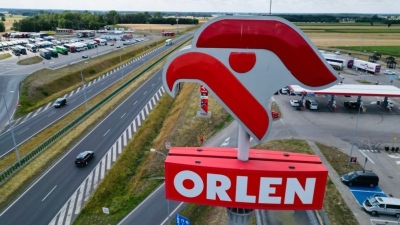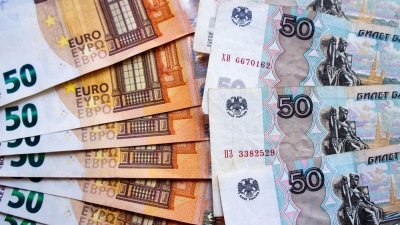What’s next for EU power market, [Part One]
![What’s next for EU power market, [Part One]](/media/k2/items/cache/e181e942b6cd3ff88068d56a4404d5ac_L.jpg)
The EU’s latest electricity market reforms will shortly enter into law but the ongoing dramatic transformation of Europe’s electricity system means that these reforms may be one building block in a much wider policy revolution.
In this two-part series, Euractiv explores where reform is most likely in the European Commission’s next term.
EU lawmakers approved on 11 April the reform of Europe’s electricity market, with sign-off by national governments expected shortly.
The reforms were triggered by the 2022 energy crisis when a decrease in the flow of Russian gas caused electricity prices to spike and created turmoil for European households and businesses.
EU decision-makers wanted to prevent future electricity price crises while maintaining incentives to invest in clean electricity generation.
To achieve its decarbonisation goals the EU will need renewable energy to cover 70% of its its electricity mix by 2030.
This will create new challenges post-2030. “The functioning of the market will be more erratic than today, because it will be made up of intermittent sources”, such as wind and solar power, Andreas Rüdinger, a researcher at the IDDRI think tank on energy transition, told Euractiv.
To avoid blackouts, electricity systems need to be balanced – supply of power needs to precisely match demand at all times.
High penetration of wind and solar energy, which are not always available on demand, and which can come and go with little warning, will make this task far more challenging than before.
Wired flex
To this end, “the key word will be ‘flexibility’ […] giving a volatile short-term price signal, while offering long-term visibility – 15 to 20 years – to consumers, particularly industrial consumers”, Rüdinger added.
‘Flexibility’ means a far more dynamic and reactive power system, which is able to quickly respond when there is an unexpected surge in demand or drop in generation.
According to the European Environmental Agency, the flexibility of Europe’s power system will have to almost double by 2030.
Technical tools like batteries or hydropower, can deliver this flexibility, but market signals will be critical to incentivise system players to deploy and use these tools. Hence the importance of Europe’s electricity market rules.
Policymakers face their own balancing act however – the power system needs a combination of stable and cheaper long-term power generation on the one hand, but also more reactive (and more expensive) short-term power generation. Market rules need to incentivise the supply of both.
Several EU electricity stakeholders who spoke to Euractiv argue that the recent reforms are not sufficient to accommodate the coming transformation of Europe’s power system.
Long-term power contracts
The recent reform has opened the way for longer-term contracts for all low-carbon sources. Deals such as ‘contracts for difference’ or ‘power purchase agreements’ lock in fixed prices, so they should help protect producers and consumers during times of price volatility.
Rüdinger proposes to go further: “We need to pave the way for ‘pools’ of contracts combining nuclear and renewable energy”. In other words, allow consumers to have strike deals to purchase a ‘bundle’ of electricity aggregated across several sources.
Currently large energy utilities can do this, but individual customers, for example large factories, cannot.
This “overlapping between different sources of production” makes it easier to ensure that the customer receives the power they need, when they need it, he explained.
For the head of the Energy Centre at the Jacques Delors Institute’s Camille Defard, it would also be appropriate to “think about pan-European support for renewables rather than just national subsidy schemes.”
Others stakeholders, such as the industrialists in the European Round Table for Industry (ERT) group, argue that governments should back insurance policies that protect the market against severe price volatility.

Europe’s industrialists want deep reform of power market to tackle €800b grid spending gap
The EU is faced with a grid investment gap of €800 billion until 2030, finds a report commissioned by industry lobby-group ERT, who call for another power market revamp to help address the issue.
Capacity mechanism to reward availability
Many European countries such as France and Germany have created ‘capacity mechanisms’ or ‘operating reserve’ system (out of the market).
These are payments which incentivise energy market players to invest in and maintain low-carbon power plant other than renewables. These capacitities are so called ‘controllable capacities’ (nuclear, hydro, biomass, etc.).
In an electricity system dominante by renewables as solar and wind, they will not be profitable thanks to their production. It will therefore be necessary to develop “capacity mechanisms” to remunerate assets for their availability, rather than their actual production.
“In the timeframe allowed by the (latest EU) reform, it was not possible to address the remuneration of available capacity,” the energy market expert from Colombus Consulting Nicolas Goldberg said to Euractiv.
Given that the EU’s electricity mix does not contain enough low-carbon electricity at the moment, the current reform simply extends the derogation that allows the most polluting fossil-fired power plans to be used as part of the different ‘capacity mechanism’ in Europe.
Moreover, capacity mechanisms or still operate at a national level, so they often don’t work well together. As a result, “we are going to have to build a capacity mechanism that is a little more harmonised in Europe” Mr Goldberg recommended.
Still to come
Euractiv will conclude this series next week with a look at some of the power system’s most complex challenges: incorporating storage; helping customers to dynamically change their consumption during times of scarcity; and EU politician’s key concern at the moment – the expansion and reinforcement of power grids.
Read more with Euractiv




